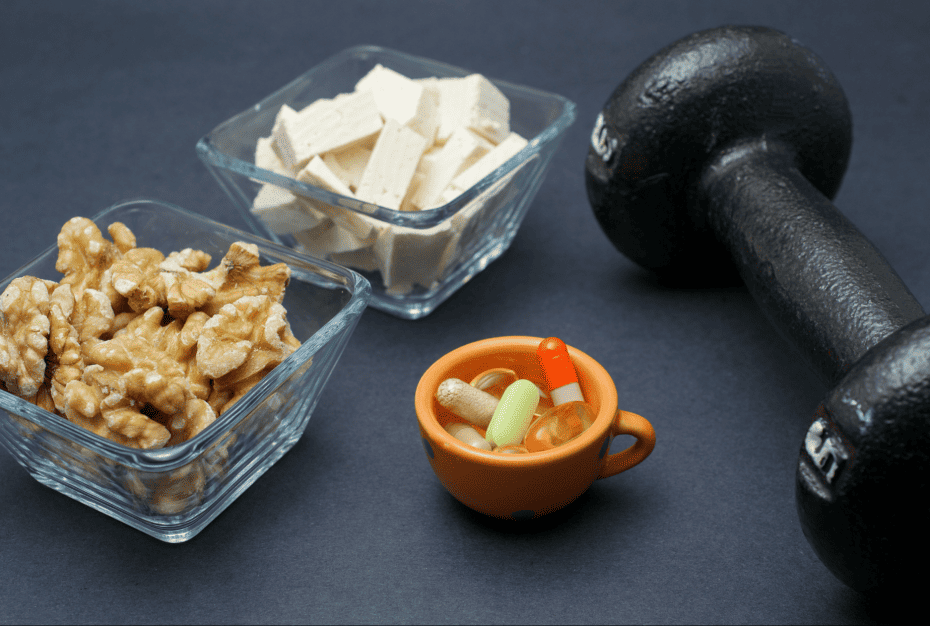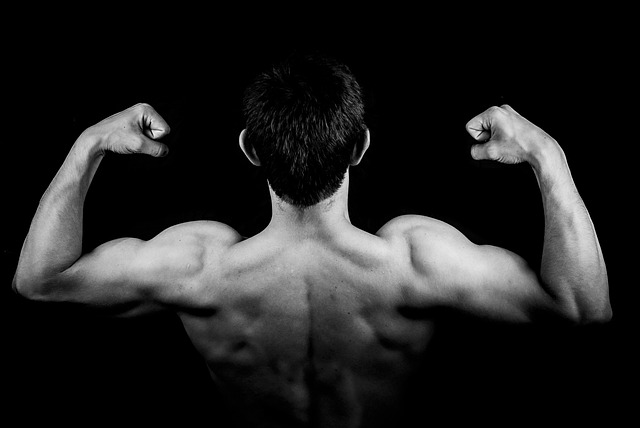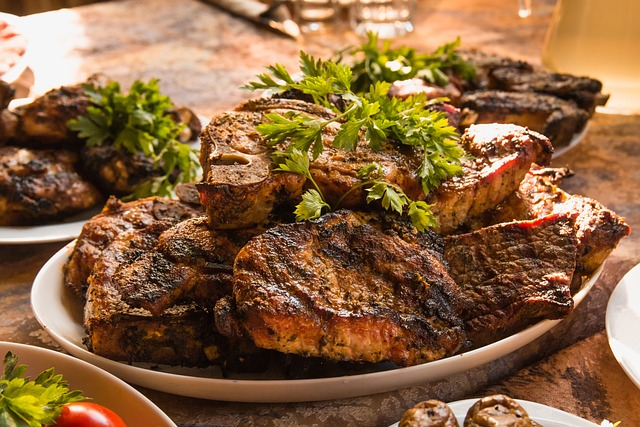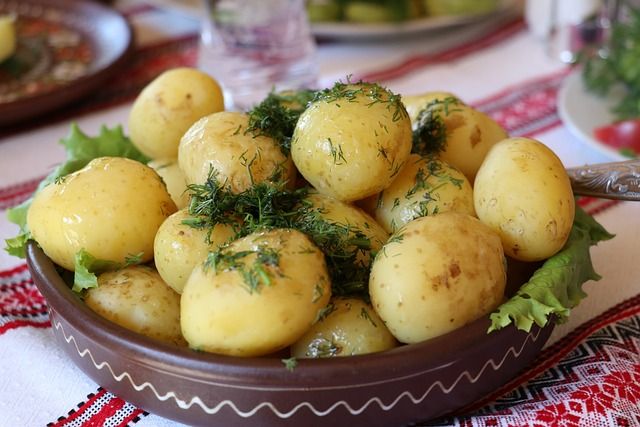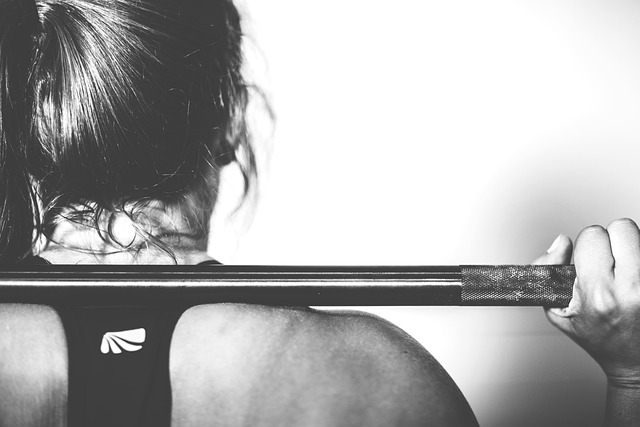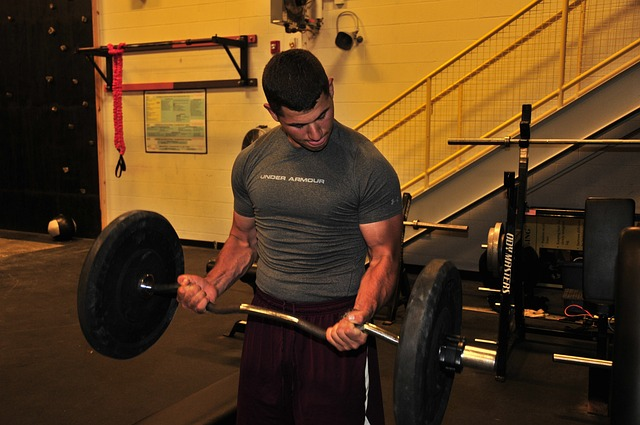The Ultimate Guide to Building Muscle Mass
The Ultimate Guide to Building Muscle Mass | Everyone Active
Are you ready to embark on a journey towards a stronger, more muscular you? Building muscle isn’t just about hitting the gym; it’s also about what you put into your body. In this deep dive into the world of muscle building, we’ll explore a critical question: Are all proteins created equal? Plus, we’ll introduce you to Athlete’s Kitchen, an organic meal delivery service in Toronto that specializes in preparing high-protein, muscle-building meals ready to eat.
Benefits of Building Muscle Mass
Building muscle mass offers numerous health and lifestyle benefits. First and foremost, it increases overall strength and endurance, making daily activities easier and reducing the risk of injury. Additionally, muscle tissue burns more calories at rest than fat, which can help with weight management and metabolic health. Building muscle also enhances bone density, reducing the risk of osteoporosis. Moreover, it can improve posture, balance, and joint stability, leading to better overall mobility. Muscle mass also plays a pivotal role in regulating blood sugar levels, making it beneficial for individuals with diabetes. Lastly, the aesthetic benefits of a toned physique can boost self-confidence and improve mental well-being. In essence, building muscle mass is not only about looking and feeling stronger; it’s about achieving a healthier and more active lifestyle.
Why Is Building Muscle Beneficial?
Building muscle is beneficial because it enhances strength, metabolism, and overall health, leading to improved quality of life and physical well-being.
How to Build Muscle Mass
Before we dive into the protein world, let’s understand the basics. Building muscle requires a few key elements:
- Resistance Exercise: This is your gym time, where you challenge your muscles with weights and exercises.
- Going to Failure: Pushing yourself close to the point of muscle failure during your workouts is crucial.
- Positive Net Protein Balance: To build muscle, you need more protein coming in than going out. Ideally, you should be in a caloric surplus, consuming enough essential amino acids, especially leucine, to fuel muscle growth.
Now, let’s tackle the big question: Does the source of your protein matter?
Animal vs. Plant Protein: The Showdown
Plant-based diets have gained popularity for their health and environmental benefits. However, when it comes to building muscle, there are some critical differences between plant and animal proteins to consider.
Digestibility: Plant proteins often have lower digestibility due to anti-nutritional factors compared to animal proteins. This means your body can’t absorb them as efficiently.
Amino Acid Profile: Plant proteins tend to have fewer essential amino acids (EAAs) than animal proteins. EAAs are the building blocks for muscle growth. This difference in amino acid composition makes plant protein less metabolically equivalent to animal protein, resulting in a lesser anabolic (muscle-building) response.
For instance, around 85-95% of the protein in animal sources like egg whites, whole eggs, and chicken is absorbed by your body, while plant sources like chickpeas, mung beans, and yellow peas are only absorbed at a rate of about 50-75%. However, you can boost the absorbability of some plant proteins, like mung beans, by removing their hulls.
How Much Protein Do You Need?
The Recommended Dietary Allowance (RDA) for protein is set at 0.8 grams per kilogram of body weight per day. However, this is the bare minimum and not optimal, especially for those aiming to build muscle. Vegetarians might need closer to 1 gram per kilogram of plant protein daily to maintain nitrogen balance.
As you age, face illness, or pursue muscle gain goals, your protein requirements increase. The current estimates suggest consuming 1.2-1.8 grams of protein per kilogram of body weight per day for optimal muscle growth.
To put things into perspective, to get 20 grams of protein from food alone, you’d need to consume 70 grams of meat, 90 grams of soy, 240-260 grams of peas or chickpeas, 650 grams of brown rice, or a whopping 1050 grams of potatoes!
Carbs and Fats Needed to Gain Muscle mass
When we talk about muscle building, protein often takes the spotlight. But let’s not forget the essential roles that carbs and fats play in this muscle-building journey. They are the unsung heroes that provide the energy we need to power through workouts and aid in the recovery process.
Carbs: The Fuel for Your Workouts
Carbohydrates are like the gasoline that keeps your workout engine running smoothly. When you hit the gym, your body relies on carbs to provide the energy required for those intense lifts and reps. Carbs are stored as glycogen in your muscles, and when you exercise, this glycogen is converted into energy.
But the importance of carbs doesn’t end there. They also help spare protein for its primary job – repairing and building muscle. When you have enough carbs in your system, your body doesn’t need to break down muscle protein to fuel your workouts. This means more of that precious protein can be directed towards muscle recovery and growth.
Fats: The Steady Energy Source
While carbs are the quick-burning fuel, fats serve as the long-lasting energy source for your workouts. They’re like the reserve tank that kicks in when your carb stores start running low. Fats provide a sustained release of energy, which is especially crucial for endurance exercises and longer training sessions.
In addition to their energy-providing role, fats are essential for overall health. They support hormone production, including those key hormones like testosterone that contribute to muscle growth. So, don’t skimp on healthy fats like avocados, nuts, and olive oil.
Protein and Recovery: The Muscle Builders
Of course, we can’t talk about muscle building without highlighting the star of the show – protein. Protein is the building block of muscle tissue. When you work out, you create tiny tears in your muscles. Protein steps in to repair these tears, making your muscles stronger and larger in the process.
But here’s where carbs and fats come back into play. After an intense workout, your body needs energy to kickstart the recovery process. Carbs replenish those glycogen stores you burned through during exercise, and fats provide a steady stream of energy to support the repair and growth of muscle tissue.
Grow Muscle: Get More Sleep
When it comes to building muscle, we often focus on the grind—the hours spent in the gym, the protein-packed meals, and the intensity of our workouts. But there’s a secret ingredient to muscle growth that’s often overlooked: sleep.
The Power of Rest
Muscle growth isn’t just about training; it’s about recovery. And one of the most potent tools in your recovery arsenal is quality sleep. Here’s why:
- Muscle Repair: When you work out, you’re essentially breaking down muscle fibers. It’s during rest, especially deep sleep, that your body goes to work repairing and rebuilding those fibers. This repair process makes your muscles stronger and more resilient.
- Hormone Release: Sleep plays a vital role in hormone regulation, particularly growth hormone and testosterone. These hormones are essential for muscle growth and repair. Inadequate sleep can disrupt this delicate balance.
- Energy Restoration: Sleep replenishes your energy stores. Without enough rest, you may find yourself fatigued and unable to give your workouts your all. Quality sleep ensures you have the vitality to push yourself during training.
- Stress Reduction: Lack of sleep can elevate stress hormones like cortisol. High cortisol levels can lead to muscle breakdown and hinder muscle growth. Sleep acts as a natural stress-reducer.
Prioritize Your Sleep
So, how can you ensure you’re getting the sleep you need for optimal muscle growth?
- Consistent Schedule: Try to go to bed and wake up at the same time every day, even on weekends. Consistency helps regulate your body’s internal clock.
- Create a Sleep-Friendly Environment: Make your bedroom a haven for sleep by keeping it dark, quiet, and cool. Invest in a comfortable mattress and pillows.
- Limit Screen Time: The blue light emitted by screens can interfere with your body’s production of melatonin, a hormone that regulates sleep. Try to avoid screens at least an hour before bedtime.
- Watch Your Diet: Avoid heavy meals close to bedtime, and limit caffeine and alcohol intake, as they can disrupt sleep.
- Relaxation Techniques: Incorporate relaxation practices like deep breathing or meditation to wind down before sleep.
Remember, muscle growth isn’t just about lifting weights and eating right. It’s about giving your body the time it needs to repair and grow stronger. So, the next time you’re tempted to sacrifice sleep for more gym time, think again. Prioritize your rest, and watch your muscle gains reach new heights. Continue reading more about recovery here.
Muscle Helps Build Strong Bones
When we think about staying active and fit, we often focus on building muscle, improving our cardiovascular health, and maintaining a healthy weight. While these are essential aspects of overall well-being, there’s one vital connection we should never overlook: the strong relationship between muscle and bone health.
The Dynamic Duo: Muscle and Bones
Our bones are the framework of our bodies, providing support, protection, and mobility. But they’re not just static structures; they are living tissues that undergo constant remodeling. This remodeling is influenced significantly by our muscles.
Here’s how muscle and bones work together:
- Mechanical Stress: When we engage in weight-bearing activities like walking, running, or strength training, our muscles exert force on our bones. This mechanical stress signals our bones to become stronger and denser. It’s like a natural “use it or lose it” mechanism.
- Support and Stability: Strong muscles provide essential support and stability to our joints. This helps us maintain balance and reduces the risk of falls and fractures, especially as we age.
- Hormonal Factors: Physical activity, including muscle contraction, stimulates the release of growth factors and hormones like insulin-like growth factor (IGF) and testosterone, which play crucial roles in bone health. These hormones promote bone growth and remodeling.
- Bone Density: Maintaining muscle mass through exercise can help prevent bone loss, which is particularly important as we get older. Low bone density can lead to conditions like osteoporosis, making bones fragile and more prone to fractures.
Protecting Your Bones as You Age
As we age, our bones tend to become less dense and more brittle, increasing the risk of fractures. This is why it’s crucial to prioritize muscle and bone health throughout your life. Here are some tips:
- Weight-Bearing Exercises: Engage in weight-bearing activities such as walking, jogging, dancing, and resistance training. These activities stimulate both muscle and bone growth.
- Balanced Diet: Consume a diet rich in calcium and vitamin D, essential nutrients for bone health. Dairy products, leafy greens, and fortified foods can help you meet your calcium needs. Sun exposure is a natural source of vitamin D, but supplements may be necessary, especially in regions with limited sunlight.
- Strength Training: Incorporate strength training exercises into your routine. Lifting weights or using resistance bands can help build and maintain muscle mass, which, in turn, supports your bones.
- Adequate Protein: Ensure you’re getting enough protein in your diet. Protein is essential for both muscle and bone health.
- Regular Check-ups: Consult with your healthcare provider to assess your bone health and discuss any potential risk factors or treatments.
Remember, it’s never too early or too late to start prioritizing your muscle and bone health. These two interconnected systems play a crucial role in our overall well-being and can contribute to a more active and fulfilling life as we age. So, let’s keep moving, building muscle, and supporting our bones—the dynamic duo that keeps us strong.
More Muscle Helps to Burn More Calories
Building muscle isn’t just about looking strong and fit; it’s also a powerful tool in the battle against unwanted body fat. Here’s the secret: muscle helps you burn more calories, making it a win-win situation for your fitness goals.
The Calorie-Burning Machine
Muscle tissue is like a high-performance engine for your metabolism. Unlike fat, which is relatively inactive, muscle is metabolically active. This means that even at rest, muscle burns more calories than fat. The more muscle you have, the more calories your body needs to maintain that muscle, which translates to a higher resting metabolic rate (RMR).
Here’s how it works:
- Increased Resting Metabolic Rate (RMR): Your RMR is the number of calories your body burns at rest just to keep you alive. Muscle requires more energy to maintain than fat, so the more muscle you have, the higher your RMR. This means you’ll be burning more calories even when you’re not doing anything.
- Calories Burned During Exercise: When you engage in physical activity, having more muscle means you’ll burn more calories during your workouts. Muscles require energy to contract and perform, and the more muscle mass you have, the more energy you’ll expend during exercise.
- Post-Exercise Calorie Burn: After your workout, your body continues to burn calories as it repairs and rebuilds muscle tissue. This process, known as excess post-exercise oxygen consumption (EPOC) or the “afterburn effect,” can help you continue to burn calories even after you’ve finished your workout.
- Better Fat Utilization: Muscle tissue is also more efficient at using fat for energy. This means that as you build muscle, your body becomes better at tapping into its fat stores during exercise, helping you shed excess body fat.
The Win-Win Situation
Having more muscle not only boosts your metabolism and burns more calories but also helps you achieve a leaner and more toned physique. It’s a win-win situation for your fitness goals:
- Weight Management: Maintaining or building muscle can make it easier to manage your weight. The more muscle you have, the more calories you’ll burn throughout the day, which can help with weight loss or weight maintenance.
- Improved Body Composition: Building muscle while reducing body fat can lead to a more sculpted and defined appearance. You’ll not only weigh less but also look and feel stronger.
- Enhanced Performance: Having greater muscle strength and endurance can improve your overall physical performance, whether it’s in sports, daily activities, or workouts.
- Metabolic Health: A higher muscle-to-fat ratio is associated with better metabolic health, including improved insulin sensitivity and reduced risk of metabolic conditions like type 2 diabetes.
Building Muscle: The How-To
To reap the benefits of muscle for calorie burning and overall health, consider incorporating strength training exercises into your fitness routine. This can include lifting weights, bodyweight exercises, resistance band workouts, or even activities like yoga that build muscle strength.
Remember that building muscle is a gradual process, and consistency is key. A balanced diet that provides enough protein to support muscle growth is also essential.
So, as you work on building more muscle, know that you’re not just building strength and definition; you’re also turning your body into a calorie-burning machine. It’s a positive cycle that can lead to a healthier, leaner, and more energetic you.
Animal Protein’s Muscle-Building Edge
Research has shown that animal protein, like pork and eggs, tends to stimulate muscle growth more effectively than plant proteins. One study compared 2-ounce portions of pork, eggs, black beans, and almonds. Pork, with its higher EAA bioavailability, had the most significant effect on muscle protein synthesis (MPS), followed by eggs. There was no significant difference between black beans and almonds.
Researchers have proposed that individuals on plant-based diets aiming to achieve a comparable MPS to omnivores might need higher protein intake, around 1.8 grams per kilogram of protein daily.
Strategies for Plant Protein
To make up for the lower EAA availability and different absorption rates of plant proteins, several strategies can be employed:
- Consume More Protein: Simply increase your daily protein intake.
- Blend Plant Proteins: Combine different plant proteins to create a more balanced amino acid profile. Grains and legumes can complement each other.
- Fortify Plant-Based Protein: Fortify plant-based protein sources with lower or missing free amino acids to improve their muscle-building potential.
The Power of Leucine
Leucine, an amino acid, plays a crucial role in muscle protein synthesis. Consuming 2.2-2.7 grams of leucine has been suggested to boost MPS. Here’s how different proteins stack up:
- 20-25 grams of whey
- 20 grams of corn
- 22 grams of potato
- 37 grams of brown rice
- 38 grams of pea
- 40 grams of soy
- 45 grams of wheat protein
Each of these protein sources provides approximately 2.7 grams of leucine. Keep in mind that these numbers refer to protein content, not the actual food quantity.
Unlock Your Full Health and Fitness Potential with Athletes Kitchen
Are you ready to supercharge your health and fitness journey? Look no further than Athletes Kitchen, your trusted partner in achieving your wellness goals. Whether you’re aiming to grow more muscle, fortify your bones, boost your energy levels, or maintain a lean physique, we’ve got you covered.
Why Athletes Kitchen?
We understand that achieving your health and fitness goals can be a complex puzzle. That’s why we’ve taken the guesswork out of meal planning and portion control. Our expert chefs prepare organic, portion-controlled meals that are fully cooked and ready for you to enjoy. No more fussing over measurements or calorie counting – we’ve got it all sorted for you.
Delicious Diversity from Around the World
At Athletes Kitchen, we celebrate the flavors of the world. Our menu features a mouthwatering array of dishes from various cultures, ensuring that your taste buds are always delighted. Whether you crave the zesty spices of Asia, the comforting warmth of Mediterranean cuisine, or the hearty goodness of classic comfort food, we’ve got something to satisfy every palate.
Toronto’s Trusted Choice
We’re proud to serve the vibrant city of Toronto and its surrounding areas. Our mission is to empower you on your journey to health, making it easier and more enjoyable every step of the way. With Athletes Kitchen, you’re not alone in your quest for wellness – we’re here to support and nourish you.
So, whether you’re a seasoned athlete, a fitness enthusiast, or someone simply looking to make healthier choices, Athletes Kitchen is your ally. Let’s embark on this exciting journey together, fueling your body with delicious, organic meals that align with your health and fitness goals. Your path to a healthier, more vibrant you starts here.
The Need for More Research
While we’ve made strides in understanding protein’s impact on muscle protein synthesis, there’s still much research to be done, especially when it comes to comparing plant vs. animal-based proteins.
Key Takeaways
If you’re following a plant-based diet and want to maximize muscle gains, here are some key takeaways:
- Aim for higher protein intake, around 1.6-1.8 grams per kilogram of body weight per day.
- Combine different plant proteins to compensate for lower or missing essential amino acids. Think grains and legumes.
- Consider supplements to ensure you’re getting all essential amino acids in adequate amounts, especially if your goal is to increase muscle mass.
In conclusion, building muscle is a multifaceted journey that involves more than just lifting weights. Nutrition plays a crucial role, and understanding the nuances of protein sources can help you make the most of your muscle-building efforts.
And for those in Toronto looking for a convenient way to fuel their muscle-building journey, check out Athlete’s Kitchen. They offer organic meal delivery services with high-protein, muscle-building meals that are ready to eat. It’s a delicious and convenient way to ensure you’re getting the protein you need to achieve your muscle-building goals.
References:
https://www.mdpi.com/2072-6643/15/14/3159/
https://www.ncbi.nlm.nih.gov/pmc/articles/PMC10343739/
https://www.ncbi.nlm.nih.gov/pmc/articles/PMC10308267/
